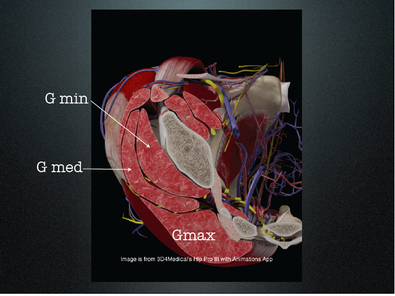
I often say when I am teaching “If you don’t know where your needle is, it probably shouldn’t be there” and “ Know your anatomy!”.
An easy place to get lost at times is in the posterior cervical muscles or anterior compartments of the lower leg and arms. In addition to using an app like 3D4Medical, Monster Anatomy or The Trail Guide, it is always a good idea to count layers as the needle goes in.
The 1st layer is always the skin and underlying subcutaneous fat layer. Next is usually the epimysium of a muscle. Next would be the epimysium as you exit the muscle and enter the next one, until you run out of muscle or hit bone (and we usually encourage using a bony backdrop when needling!). Counting the number of layers you go through will often provide clues to where you are, depth wise. Take the glutes for example.
In the buttocks, trying to get to the gluteus medius, you have a few options. You can go go just under the crest directly to the bone and come back slightly, which will usually put you in the gluteus medius. But what if the trigger point is somewhere else? Posteriorly, you really only have the gluteus maximus, so skin/g max/bone. If you are a little above the trochanter, then you have skin, g med/g min/ bone. If you are anterior to that? Then you may have TFL/g med/ g min/ bone. See what I mean?
Counting layers pays off and helps you to do better job. It will improve your outcomes as well!
Ivo
